I believe pandas does cell merging for multi-indexes out of the box, however not for data cells. You might get away with it using CSS tricks.
I’m using a 2-level index dataframe with random values and your column names + a no merge column:
previous_year no merge current_year ltm_share previous_value current_value change
a 1 0.538438 0.197967 0.158720 0.031351 0.180214 0.888741 0.132500
2 0.966025 0.363504 0.071190 0.503113 0.132445 0.883562 0.461739
3 0.226929 0.913076 0.570731 0.521068 0.776050 0.996729 0.040835
b 1 0.327364 0.274166 0.789224 0.030502 0.508330 0.091049 0.497796
2 0.041149 0.403038 0.924517 0.271489 0.692771 0.003774 0.391067
c 1 0.260083 0.873030 0.658576 0.983804 0.736934 0.970065 0.162908
These are the ideas on which the solution works:
- use
grid layout on the table
- use
display: contents on all intermediate tags (thead, tbody, tr). It should be well support by now
- hide the cells below row spans with
display: none
- make cells span several rows with
grid-row: span N
rowspan attributes are not recognized anymore, so index levels need to be treated as any other columns.
I’m using a 2-level index dataframe with random values and your column names + a no merge column:
previous_year no merge current_year ltm_share previous_value current_value change
a 1 0.538438 0.197967 0.158720 0.031351 0.180214 0.888741 0.132500
2 0.966025 0.363504 0.071190 0.503113 0.132445 0.883562 0.461739
3 0.226929 0.913076 0.570731 0.521068 0.776050 0.996729 0.040835
b 1 0.327364 0.274166 0.789224 0.030502 0.508330 0.091049 0.497796
2 0.041149 0.403038 0.924517 0.271489 0.692771 0.003774 0.391067
c 1 0.260083 0.873030 0.658576 0.983804 0.736934 0.970065 0.162908
Here’s the code:
hide_cells = df.index.get_level_values(0).duplicated(keep='first')
multiples = df.index.get_level_values(0).value_counts()
style = df.reset_index().style.hide_index().set_table_styles([
{'selector': '', 'props': [
('display', 'grid'),
('grid-template-columns', f'repeat({len(df.columns) + df.index.nlevels}, auto)'),
]},
{'selector': 'thead, tbody, tr', 'props': [
('display', 'contents'),
]},
])
style = style.set_properties(subset=pd.IndexSlice[hide_cells, ['level_0', *merge_cols]], display='none')
for height in multiples.unique():
if height <= 1:
continue
mask = ~hide_cells & df.index.get_level_values(0).isin(multiples.index[multiples.eq(height)])
style = style.set_properties(subset=pd.IndexSlice[mask, ['level_0', *merge_cols]], **{'grid-row': f'span {height}'})
with open('out.html', 'w') as f:
f.write(style.render())
And the result:

This is my initial answer, relies on older CSS capabilities, but only works if no columns are next to each other. It uses
- fixed row heights in your table
- make the first cell of a multi-index row bigger (with
position:absolute to avoid changing the table row, and line-height to vertically align text)
- hide the cells below it with
visibility:hidden
hide_cells = df.index.get_level_values(0).duplicated(keep='first')
multiples = df.index.get_level_values(0).value_counts()
style = df.style.set_properties(height='1.5em')
style = style.set_properties(subset=pd.IndexSlice[hide_cells, merge_cols], visibility='hidden')
for height in multiples.unique():
if height <= 1:
continue
mask = ~hide_cells & df.index.get_level_values(0).isin(multiples.index[multiples.eq(height)])
style = style.set_properties(subset=pd.IndexSlice[mask, merge_cols], **{'position': 'absolute', 'line-height': f'{height * 1.5}em'})
with open('out.html', 'w') as f:
f.write(style.render())
This works vertically but messes up the horizontal alignment when there are several merged columns next to each other:

The way around is to manually specify fixed positions for columns, I suppose.



